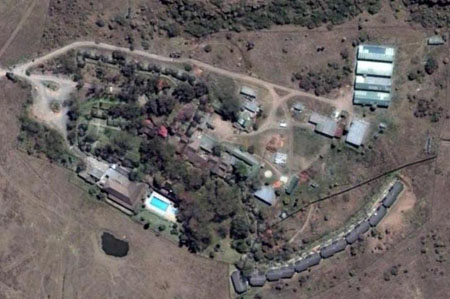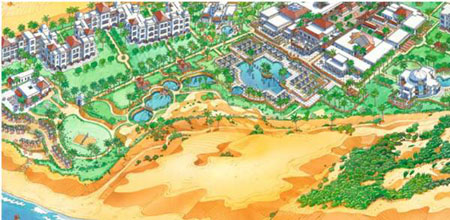4. Mass Tourism
Tourism in the Postmodern Society
The development of leisure and tourism in today's postmordern society is characterized by cultural differences, manifold supply and a differentiated demand.
Manifold supply. Traditional destinations and businesses are facing a strong competitive pressure, at the same time new businesses and destinations have to struggle with significant market entrance barriers. These developments lead to a rapidly growing variety of leisure and tourism supplies ending in a vast number of new touristic service providers, travel agencies and agents.

Source: Google Earth
The package tour, booked from a catalogue, is the typical fordistic (mass processing) characteristic of mass tourism since the 1970s.
Tasks: Comment on the last sentence.
a) How can tourism and fordism, the production principle of mass
processing, be linked with each other?
b) Reflect on changes in industry: What will be the next common
way to travel after package tours?
Differentiated demand. The customer in our postmordern society can choose his destination, but also expects to be able to choose out of a variety of given holiday trips. The travel market is characterized by a multiplicity of most diverse travel offers and fierce price competition, which produces new and more differentiated submarkets. A new type of tourist, which is called multi-optional and hybrid by experts, wants to experience something or wants to realize his or her full potential.
Holiday trips became well rehashed consumption products. They should entail no work for the customer. Moreover they should be "consumable" like a Big Mac at any desired location of the world, like e.g. amusement parks or package tours in club facilities. These places are examples of geographical "Not-Places" as booming citadels of touristic consumer culture (Hopfinger 2007).

Source: Robinson
Tasks:
1. Do you know such "Not-Places" from your own holiday trips,
from the media or from texts?
2. What does this geographical term not-being-located mean?
